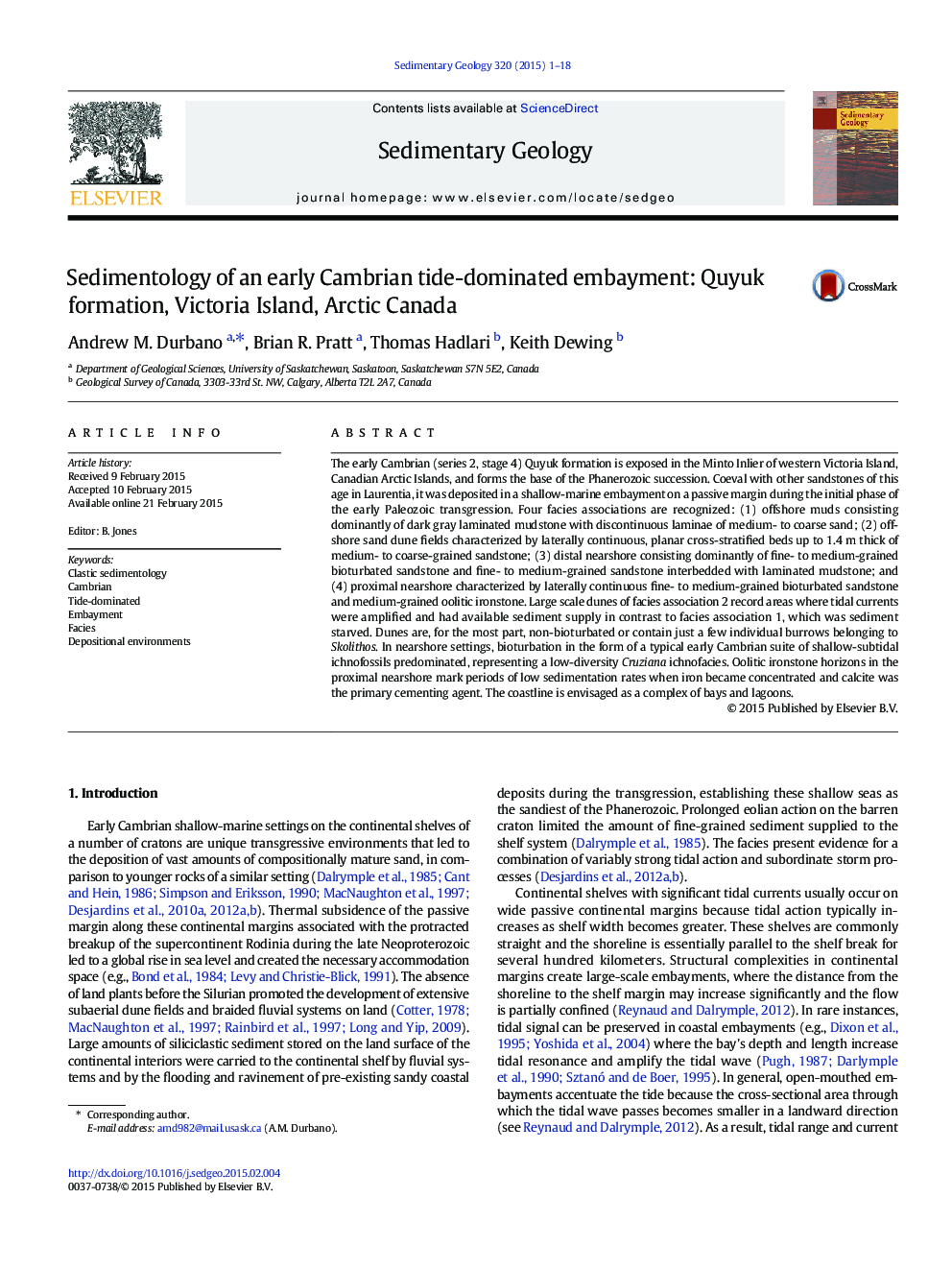| کد مقاله | کد نشریه | سال انتشار | مقاله انگلیسی | نسخه تمام متن |
|---|---|---|---|---|
| 4689241 | 1636043 | 2015 | 18 صفحه PDF | دانلود رایگان |
The early Cambrian (series 2, stage 4) Quyuk formation is exposed in the Minto Inlier of western Victoria Island, Canadian Arctic Islands, and forms the base of the Phanerozoic succession. Coeval with other sandstones of this age in Laurentia, it was deposited in a shallow-marine embayment on a passive margin during the initial phase of the early Paleozoic transgression. Four facies associations are recognized: (1) offshore muds consisting dominantly of dark gray laminated mudstone with discontinuous laminae of medium- to coarse sand; (2) offshore sand dune fields characterized by laterally continuous, planar cross-stratified beds up to 1.4 m thick of medium- to coarse-grained sandstone; (3) distal nearshore consisting dominantly of fine- to medium-grained bioturbated sandstone and fine- to medium-grained sandstone interbedded with laminated mudstone; and (4) proximal nearshore characterized by laterally continuous fine- to medium-grained bioturbated sandstone and medium-grained oolitic ironstone. Large scale dunes of facies association 2 record areas where tidal currents were amplified and had available sediment supply in contrast to facies association 1, which was sediment starved. Dunes are, for the most part, non-bioturbated or contain just a few individual burrows belonging to Skolithos. In nearshore settings, bioturbation in the form of a typical early Cambrian suite of shallow-subtidal ichnofossils predominated, representing a low-diversity Cruziana ichnofacies. Oolitic ironstone horizons in the proximal nearshore mark periods of low sedimentation rates when iron became concentrated and calcite was the primary cementing agent. The coastline is envisaged as a complex of bays and lagoons.
Journal: Sedimentary Geology - Volume 320, 1 May 2015, Pages 1–18
